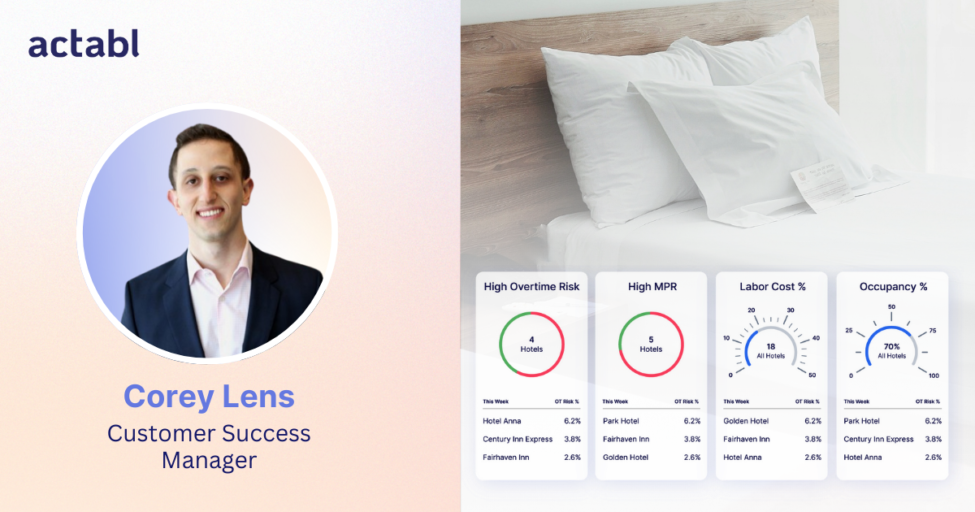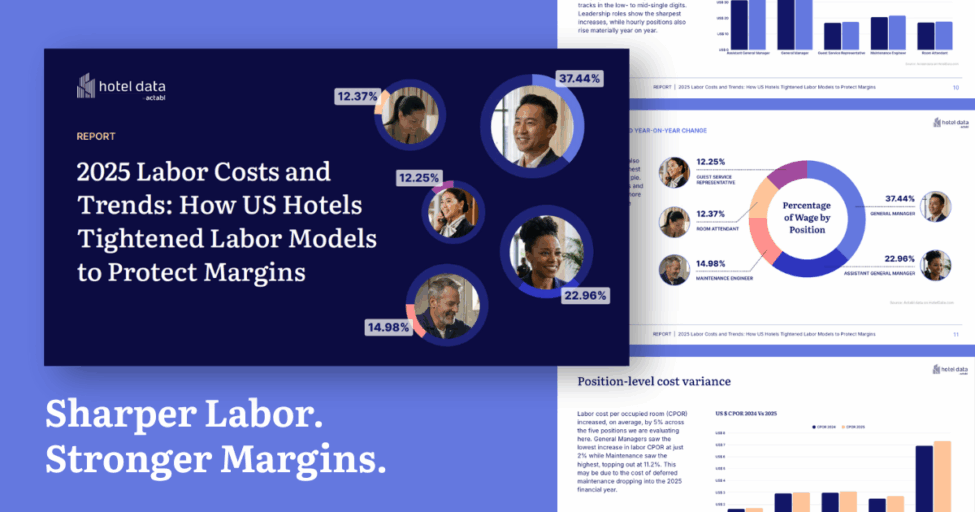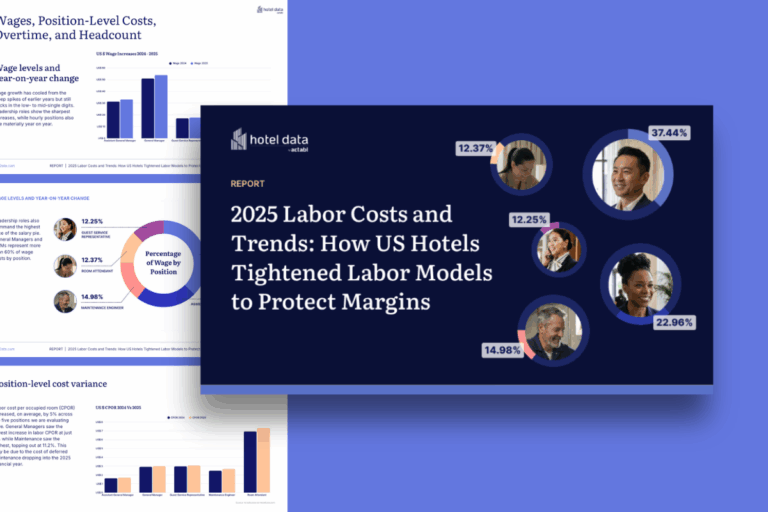
The Biggest Hotel Labor Mistakes (and How to Fix Them)
Labor remains one of the biggest challenges facing hoteliers today. While hotels are expected to add 14,000 jobs this year, staffing levels will still fall short of 2018 and 2019. From balancing labor costs to maintaining operational efficiency, hotel managers must navigate a complex landscape where even small missteps can significantly impact the bottom line. But what are the most common hotel labor mistakes—and, more importantly, how can they be fixed?
To get expert insight, we spoke with Corey Lens, a seasoned hospitality leader, about the top labor mistakes costing hotels today, the key metrics every hotelier should track, and the lessons he’s learned from managing labor firsthand. In this interview, Corey shares practical strategies to optimize hotel staffing, reduce unnecessary costs, and leverage tools like Hotel Effectiveness to maximize efficiency.
Common Costly Hotel Labor Mistakes
What are the top labor mistakes that are costing hotels today?
One of the top labor mistakes hotels and resorts make is failing to find out which employees are willing and able to work in different roles. This is particularly relevant to properties that have employees hired for part-time positions. Hotel operations are dynamic and often require the ability to pivot at a moment’s notice depending on what the day’s operations bring. At many properties I’ve worked at, we have brought on part-time employees for roles which needed additional support, but that didn’t have full-time hours available. In several instances, our management teams quickly realized that these employees wanted full-time work, and were capable of working in positions outside of that which they were originally hired for. In certain circumstances, we were spending on overtime in positions which these part-time employees were able to be trained in.
By cross-training these part-time employees, we were ultimately able to win twice by limiting overtime and providing these formerly part-time employees with full-time work depending on operational needs. This pivot was also beneficial in that it helped prevent turnover by providing these employees with the additional hours they sought and stability in their work schedule.
On a related note, a mistake I have personally made is cross-training employees between departments and positions without setting them up in our payroll system and Hotel Effectiveness to be scheduled and paid for their additional role. This caused delays in them beginning to work in their additional position.
It is critical, particularly for properties spending on overtime, to look at part-time associates’ capability and willingness to learn and work in other positions. Once managers do so, it is equally as important to administratively prepare for those employees to begin working in their new roles before they are actually needed. Speaking from personal experience, tools such as CoverageFinder in Hotel Effectiveness are true game changers. Managers need to take the time to set themselves up for success in getting the most out of the resources they have access to. Doing so can help with long-term retention, positively impact the bottom line, and ensure you have the help you need ready when you need it most.
The One Hotel Labor Metric You Could Be Overlooking
What’s one labor metric that hotels often overlook but should pay more attention to?
Minutes per room and expectations surrounding this metric within the housekeeping department is frequently not examined closely enough. Often, property leaders don’t take the time to assess whether their MPR expectations are as realistic as possible, and it is important to do so as this metric affects the success of the department.
In Hotel Effectiveness, properties have the ability to set many different labor standards for MPR depending on details such as room type and the type of service being completed. It is critical that above property leaders take the time to set the appropriate standards they will hold their property leaders to throughout the individual properties in their portfolio, as each hotel or resort’s rooms and property layouts can differ drastically. The ability to set multiple room clean times for different room layouts and cleaning types allows properties to accurately schedule housekeeping employees based on the day’s needs. What is often solely considered when building labor standards in Hotel Effectiveness is simply the actual time it should take to clean a given room type. Aspects of a housekeeper’s day such as travel time between rooms or accommodations are frequently overlooked, but ultimately affect their time spent cleaning throughout a shift.
The reality of travel time, which can be completely unique from property to property, should always be considered when building labor standards for MPR. As an example, one of the properties I most recently worked at consisted of free-standing cottages located on over sixty acres of land. Depending on a given day’s needs, we asked housekeepers to travel several minutes by golf cart between the units we needed them to service. They then needed to unload their golf cart and arrange their supplies prior to starting on the next assignment. While it can be difficult to decipher exactly how much travel time to build into MPR standards, it is recommended to give this consideration based on the nuances of your property’s layout, and at least provide your team with a buffer of time to start working on their next assignment. Doing so will most accurately set your property up for success with regard to meeting the minutes per room metric in the housekeeping department.
How Understanding Your Team Can Transform Your Labor Strategy
What’s one thing you wish you knew when you first started managing labor?
Every employee possesses a unique set of strengths and weaknesses. It is crucial to manage each employee fairly but differently based on those strengths and weaknesses to get the most out of them and the team as a whole. Learning your staff’s individual strengths and weaknesses and building around them can be a major undertaking. That said, doing so shows your commitment to the team’s success and is really important to get the most out of each employee.
In regard to something such as minutes per room, Hotel Effectiveness is a very useful tool in allowing managers to see which room attendants are cleaning at a slower pace than others. Once a manager can determine which members of their team may need additional attention or training, they can dig into what aspects of their position may be posing challenges so that they can proactively address their needs and get them up to speed.
A Smarter Approach to Managing Hotel Labor Effectively
Hotel labor mistakes can quickly add up, leading to wasted resources, high turnover, and unnecessary overtime costs. As Corey highlighted, changes like cross-training part-time employees, adjusting minutes per room (MPR) standards, and leveraging Hotel Effectiveness tools like CoverageFinder—can significantly improve efficiency and employee satisfaction.
At Actabl, we're here to support you and your teams. By taking a proactive approach to labor management, you can reduce costs, boost retention, and build a more resilient operation. Let’s talk labor strategy—see how we can help you succeed.





